Artist Feature: Carl Homstad
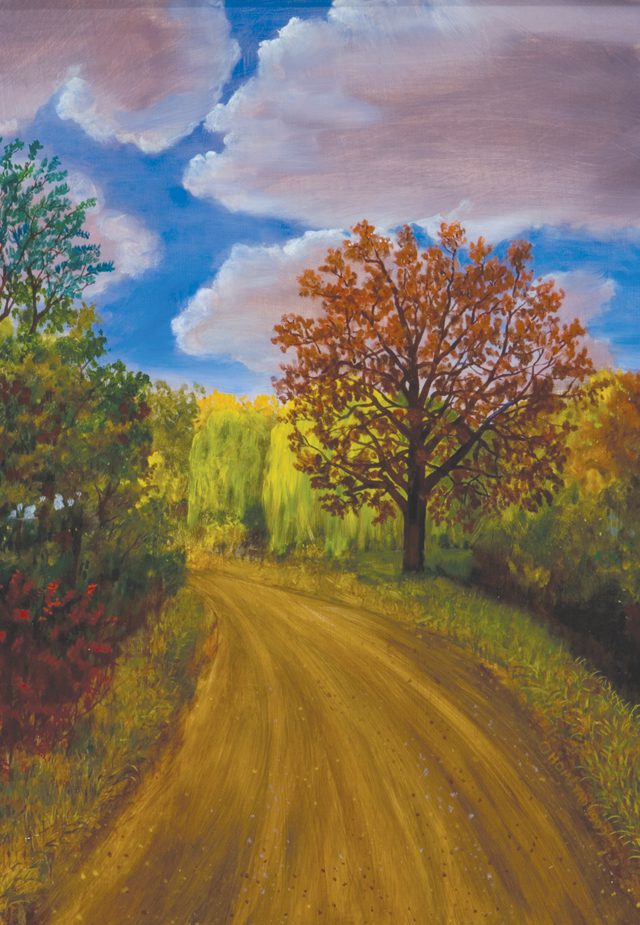
By Benji Nichols • Photos courtesy Carl Homstad
Originally published in the October/November 2009 Inspire(d)
Many people in the upper Midwest can recognize the unique wood cut prints of Decorah artist Carl Homstad – and perhaps even more have seen some of his 40 plus murals on the sides of buildings from Osceola to Calmar. But as this successful local artist can attest, the artist’s path is not usually one of riches and fame, but of honest hard work and creativity – both on the canvas, and off the beaten trail.
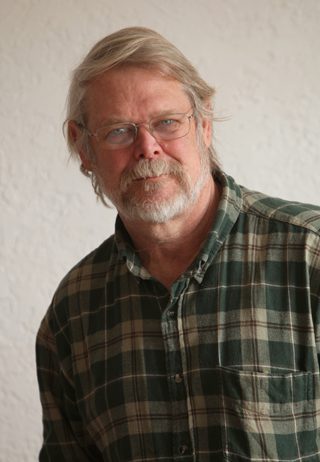
It was in the late 1960s that Carl Homstad traveled from Denver, Colorado to Northeast Iowa on a visit to Luther College, the very school where his parents had met decades earlier. But it wasn’t exactly an introduction to Decorah’s institute of higher learning that sold him on later returning to Luther as a student. “I came out for my sister’s graduation, and instead of going to the ceremony, I floated down the river in a canoe – that was pretty much it,” he says. “Denver was a thousand miles away, and that seemed about right.”
Of course it didn’t seem to hurt that the counterculture of the late 1960s was also alive and well at Luther when Homstad showed up that perfect spring day, but he also sites a noticeable crop of both teachers and students, particularly in the arts, that helped lure him to Decorah. Amongst the most notable art educators at Luther during that time were Orville Running and Dean Schwartz – both instrumental in getting an Art Major recognized at the College just a decade earlier – and the young, new educator Doug Eckheart.
Homstad spent much time honing his skills both with his mentors at Luther and also studying abroad. A year with the Institute of European Studies included a class on mural painting in Vienna, amongst many other opportunities. Upon returning to the US and finishing his degree at Luther, Homstad found interesting opportunities close to home. The Iowa Arts Council, then led by Nan Stillians, was in its hay day with Touring Art Team projects. It was within this program that Homstad began to shape his style and ideas for recreating the Iowa landscapes and scenes that he is now well known for.
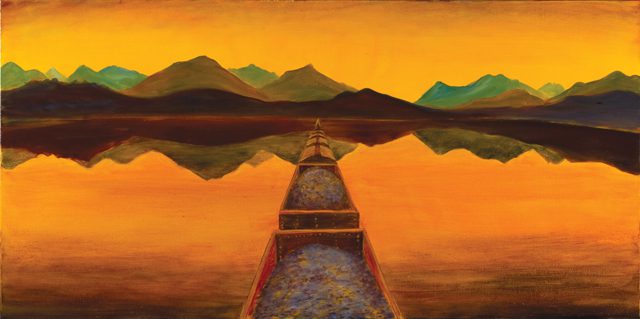
The Touring Art Teams of the progressively-led Iowa Arts Council of the 1970s read like a who’s-who of now well-known Midwestern artists. Each summer, a team of eight to 10 Iowa artists would visit 20 towns that had fewer than 1500 people. The first day in a new town they would show off their crafts and skills for the residents to see, and on the second day they would teach classes and then have them present their own show that night – and Homstad says the creativity that came out of these rural Iowa communities was a revelation
“What it really did was showed that art was for everyone – and people really noticed. It was amazing some of the talent that we found – competing kitchen bands from neighboring towns, incredible painters, musicians…” he says, trailing off.
It was also during this time that Homstad began working through the Comprehensive Employment Training Act (CETA) program. “The town of Jefferson, Iowa, wanted a mural, and through the channels I was picked as the person to do it – even though I hadn’t actually done a large scale outdoor mural! It was one of, if not the biggest, murals I have ever done. I had taken a class – a study really – on murals in Vienna and knew how to do it, but hadn’t actually done one – so it was my first outdoor landscape mural. I’ve learned a lot since then…”
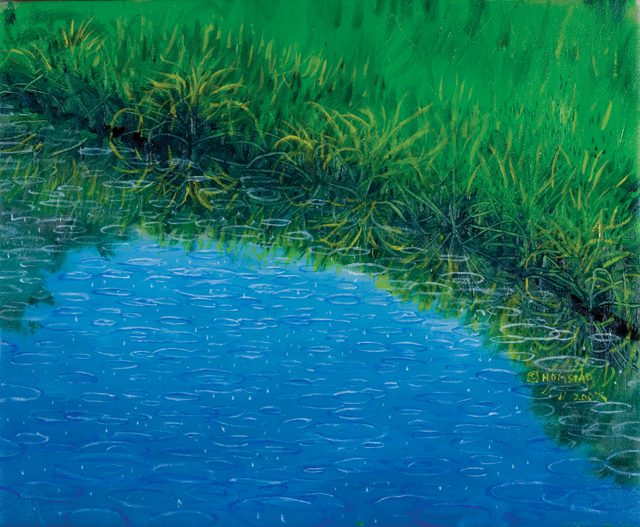
The humble artist now has an impressive collective body of mural-works across the upper Midwest that is really nothing short of a legacy. Most of the works are commissioned scenes of historical landscapes or locations and Homstad enjoys explaining the almost Zen process of designing, implementing, and creating the murals. “I always tell people that murals, just like house paint, are not permanent. They have to be worked on every few years if you want to keep them – otherwise the scenes just fade back into time,” he says.

As Homstad continued to mature as an artist he found that his studio in Northeast Iowa offered him an life that he was short to find anywhere else. The natural beauty and changing seasons provided not only a lot of fun outdoor activities, but also a vast array of scenes to call up in his woodcuts. “It was Orville Running who showed me that the woodcut prints could be a decent way to make a living – as even though they take some time to create, as an artist you can then print many of them and have them in various galleries all at once – versus having one painting in one place at a time.”
The process that goes into Homstad’s woodcut prints is something he enjoys. Generally four different plates are carved of the same scene depicting different reliefs that are then inked by hand and printed in sequence. “It’s kind of like making a picture into a jigsaw puzzle, drawing it, cutting it up into pieces, and then putting them back together,” says Homstad of the tedious printing process. “It’s not really drudgery though – it’s interesting work.”
Through his art, Homstad has drawn from his past and yet pushed forward in style and mediums. He says he has noticed a change in his compositions over the last decade – now following a more organic, flowing shape and utilizing empty space. “The hardest thing is to be simple – I’ve been creating art for the better part of 50 years and learning the whole way,” he says. “But now I sort of have to un-learn a lot of those things to find the space and simplicity.”
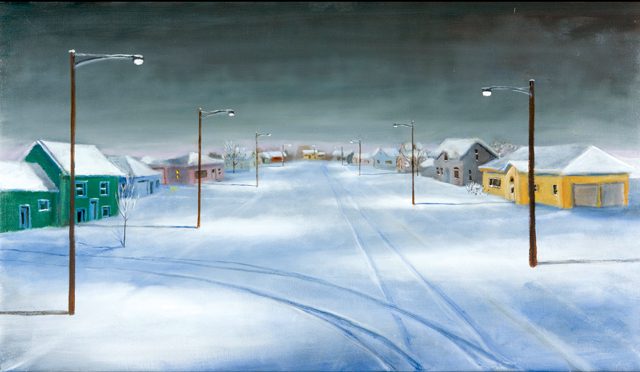
Much of this he attributes to his travels and study of Chinese and Japanese woodcuts as well as ink wash painting. Homstad has also found himself at a place in life where he has rediscovered other mediums. It was an invitation by good friend Mike Noonan of Unified Jazz Ensemble fame that brought him back to oil painting.
“Mike invited me out to see a Winslow Homer retrospective in DC –he is one of my favorite artists. While I was there I realized that Winslow didn’t really start oil painting until he was 45, and I thought, I’m 45, I could still do this! I mean, trying to make a living as an oil painter is like being a quarterback in the NFL – it’s out there, but it’s pretty hard to do. Luckily because of some of my other artwork I am now afforded the chance to come back to painting.”
Taking shape from many events in Homstad’s life, his oil paintings share stories from rail riding across the west as a young man, to serene and mature landscapes of Japan, the Midwest, and many points between. It is within these landscapes that Homstad confesses his true goal in his artistic life, with only a slight grin on his wild and honest face, “What I’m ultimately working toward is a zen painting of a corn field.”
Carl Homstad’s rural Decorah studio is open by appointment and will also be featured on the Northeast Iowa Studio Tour. Visit www.carlart.com for more information about the artist, as well as world of famous hermit and social commentator Art Kuntsler.
————————————-
Benji Nichols has a not-so-secret passion for collecting woodcut prints of local artists, and believes we are incredibly luck to have a great history of such art here in NE Iowa.












